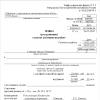05.10.2015, 16:00- Vladislav Miktum 10056 26
The idea of this article originated with me a long time ago, but the scale of the problem raised scared me away for a long time. The further my thoughts went, the clearer my own lack of competence became, so I did my best to look for reasons not to start writing.
This cursed topic haunted me day and night, at work and in rare moments of rest, treacherously slipped through in a friendly conversation and was read between the lines in the price tags for fruits. Fate itself forced me to gather the remnants of courage lying in ruins and still decide to jot down a few words on the issue of the conflict between classic fiction and what we meet in comics. These are the few words I present to the venerable public of Spidermedia.

Consideration of such nuances is a topic not at all typical for ordinary media. This is how SpiderMedia differs from ordinary media, and, together with a couple of other sites, is the backbone and avant-garde of resources dedicated to mass culture. Well, if not now, then soon. Few people know about this, however, but not everyone is allowed into paradise either.
From the past to tomorrow
It so happened historically that the audience of comic book lovers and science fiction intersect. No wonder science fiction is an important cultural phenomenon spanning literature, art, film and continues to haunt us in video game comics. It is logical that people who have taken part in pop culture will give money both for ordinary novels dedicated to space adventures and for pictures diluted with text in a sweet setting. However, these genres have not only historical parallels in their development, but also diametrically opposed features. The moment is not the most obvious, and therefore let's try to parse it together.

The idea to show how different science fiction in its classical sense and what we see in comics came to me after studying materials related to the new wave in science fiction. Representatives of this trend (Zelazny, Murcock, Aldiss) sought to break the connection between the literary genre of science fiction and the comic book format, which discredits the artistic value of this very genre. The popularity of pulp fiction and picture books has notably affected the status of science fiction literature, creating a stereotype of second-rate teenage writing for it. And there was nothing to be done about it, because in ninety-five cases out of a hundred this stereotype was confirmed in a fresh magazine with a kitsch cover.

Fiction at that time (and even today) by and large consisted of low-grade books about flat maritime protagonists saving the world that happened to be at hand. Even after the genre was notably shaken up by Golden Age stalwarts like Isaac Asimov and Arthur C. Clarke, the amount of bad fiction hasn't abated. On the contrary, in the wake of the popularity of science fiction magazines and a couple of good writers, hundreds of different mediocrities surfaced, continuing to feed the public with stupid literary miscarriages.

The new wave influenced not only the development of the Sci-Fi literary genre, but also the approach to its critical analysis. To this day, the academic study of science fiction virtually ignores the existence of comics. The maximum that is awarded to picture books is the mention of their direct existence.
Contemporary writer and literary scholar Lance Oulsen admitted that as a child he did not read science fiction, except for "terrible comics." He is not the only one who adheres to such an assessment of the content of bright magazines. Voicing negative judgments out loud is bad manners today, you still make yourself a hypocrite in the society of the victorious post-post-modernity. But chuckles and a condescending intonation inevitably slip through if in a literary environment it somehow comes to comic books.
The reason for this attitude is rooted deep in time. Which sci-fi comic will be named first in our country? If I knew the answer... But the English-speaking population of the planet will surely mention "Flash Gordon". A comic book about a brave blond man who, by a whim of fate, was abandoned on the insane planet of the autocrat Ming, began to appear in 1934 and gave rise to a real cult. This wonderful comic (let's just pretend that Dynamite does not exist), like its older brother Buck Rogers, defined many visual decisions in the space opera genre, set the canons that haunt us in all sorts of things " star wars". Alex Raymond not only created an icon of American pop cult, but also inspired many future generations of artists with his drawing.

Incorporating all the best that fiction of the heyday of the palp could provide, Flash Gordon could not get rid of its shortcomings - flat characters and clichéd dialogues. It was they who became the reason for the eviction of comics beyond the framework in which there is a place for serious cultural discourse.

Reading "Flash Gordon", we enthusiastically follow the confrontation between a valiant hero and a sinister dictator. We watch how the strength and courage of our hero help him climb to the top of the world, despite everything that this world inhabits. But a psychological portrait cannot consist of only positive characteristics. As the most striking example for comparison, I would like to cite the novel "1984" by George Orwell, which has become a cult work, being, in fact, science fiction. Orwell showed both the functioning of the authoritarian mechanism and human behavior in the depths of this machine for erasing personality. In the same way, Clark, Lem, Dick placed the human world in completely unusual conditions, and modeled the behavior of quite real people in it (like me or you), and did not describe the mythical Übermensch. And this myth-making was the trouble with almost all old comics.

Alex Raymond borrowed many elements from ancient Roman culture.
But we're getting a little ahead of ourselves. Fiction also did not immediately prove its right to be called literature. Just as Howard didn't give much thought to the psychological development of his Conan, so the creators of pulp comics didn't pay any attention to such trifles as authenticity. The genre of drawn stories did not die out in those distant 30s, but continued to exist and develop. Still ignored by serious institutions, it opened up new possibilities and approaches. Will Eisner has shown that by using sequential images, one can touch on important and personal topics. Jack Kirby showed How consecutive images can be used.

While the comic was building up its narrative power, the British invasion was drawing near. The screenwriters who came to the new world were finally able to use the tools accumulated by their predecessors with valor. But professional critics have not rushed to lick the pages of new issues of comics. And it cannot be said that the blame lies on the shoulders of some universal injustice. Most Britons favored fantasy, and most fantasy is as stubbornly ignored as Comic Books, dear to our hearts. The purpose of Fantasy is to describe something that cannot be because it cannot be in principle. Good fantasy, however, does not reduce the flight of fancy to mechanistic elements like mana or, Ilivatar forbid, fireballs. And with this task, balancing on the crest of a surrealistic wave, such masters as Moore and Gaiman perfectly coped ... Moreover, Winsor McKay showed us such a flight, such turns of human thought that contemporaries simply get sick when reading.

In search of a fantastic outlet
Different authors, different eras, different approaches. But it seems to me that the reason for the absence of a comic book star on the sci-fi Olympus lies in us, the readers. In film science there is a conceptexploitation film», they are usually described as low-budget films whose creators are trying to make money by speculating on the popular theme of zombies, sex, fascists or zombie fascists having sex. Much like this niche movie, a lot of comics is about the exploitation of superheroes, violence, monsters, etc. The paradox is that readers and authors like this approach, and therefore there is no need to change it.
Not only the genre is exploited, even the style of "those same comics" that everyone read in childhood becomes an effective means of attracting attention. Before us there is a vicious circle of bad graphic stories. Previously, they were made because they wanted to eat, and good authors could not be driven into the industry with a stick. Now they are made to please the public, who enjoyed more topics bad comics. Phew, you can just go crazy.

After the release of the acclaimed "Watchmen" and "Maus", it became more difficult to ignore the comics. And in order to understand whether pictorial novels can claim the title of serious science fiction, let's finally give this very fiction a definition.
The term "fantasy" was introduced at the beginning of the 19th century by Charles Nodier, the basis for this was his work "On the Fantastic in Literature". Looking into an old and dusty encyclopedia in search of a definition of the genre, we will find the following lines: “A specific method of artistic display of life, using an artistic form-image (object, situation, world), in which elements of reality are combined in a way that is unusual for it, in principle, — unbelievable, "wonderful", supernatural." Such a blurred framework could be great to untie our hands, if we weren’t so uninterested in fantasy and fairy tales. We are serious guys who came here for science fiction, what his peculiarity?

One of the main differences of science fiction, emphasized by researchers, is the function of scientific foresight that it performs. There are many examples of how scientific intuition and interest in the subject being studied helped to predict and approximate real discoveries. It is enough for us that fantastic fiction must have a clear theoretical basis at its foundation. And if nothing bothers us in the world created by the author, everything seems to be sufficiently reliable, then it is a sign of good science fiction.

There is no reason to believe that the space of the comic book interferes with the creation of quality science fiction. Rather, turning from a chrysalis into a butterfly does not give the cocoon of capitalism. In order for the series to continue its release, someone must not only read, but also buy fresh issues. Comic books with bright characters and original storytelling sell well, but this recipe lacks a point with a competent picture of the world. As a result, we have good story but bad Sci-Fi. If you are one of those perverts who burdened yourself with reading Lem's Fiction and Futurology, you can easily imagine how gracefully he would not leave a wet spot from the popular "Saga", "East of West", "Prophet".

It would be worth mentioning the exceptions that an author striving for high-quality Sci-Fi can be equal to, but nothing but the Planetes manga comes to mind. It tells about space debris cleaners, and the prospects for human space exploration are shown in rather scrupulous detail. Masters like Bilal or Möbius created marvelous visual feasts. Geniuses, of course, but today we are talking about completely different things.

Good Sci-Fi must slide along the edge of the mode of the possible. It should not only surprise with magical pictures, but also provide an opportunity to reflect on the prospects that have opened up. This comic needs time. Today, psychologism and realism is becoming an indispensable element of any story, even a superhero one. This will most likely be followed by experiments with scientific reliability, the search for an exact syntax when describing the world of a work, and a clear thinking through of the sociological side. tomorrow. In any case, I really want to believe in it. And until that moment, we will continue reading the "bad" science fiction comics, because they do not become less interesting and exciting.
IN Lately There aren't many sci-fi comics coming out. Not just exploiting the appropriate surroundings, but seriously thinking about scientific and technological progress and the place in it of a person with all his weaknesses, shortcomings and strengths. Fortunately, not everything is so sad and several science fiction comics have appeared, on the one hand, so different in drawing, plot and approach, but, on the other hand, common in one thing - travel to alternative universes. About them - in our review.
Black Science (Black Science)
Run through the poisonous jungle. Chase. Breakage, despair, and now one of the heroes is dying! We didn't even know the name.
"Black Science" throws you into the thick of things, immediately gives you a breath. Events are developing rapidly. What was it? We'll have to figure it out throughout the comic, but many mysteries will remain in limbo - for now, the publishing house " Fantasy Book Club” has released only the first volume, and in the original Image has already published 5 tpb, and at least three more are expected.
This is another story about traveling to alternate worlds where everything went wrong. Disgraced scientist Grant McKay, commissioned by a corporation, creates a machine to open a portal to the Multiverse. One day, she inadvertently transfers to another world not only the scientist with the team, but also his children, as well as the embittered supervisor Kadir, who is also a former classmate of the scientist. Immediately upon arrival in another world, the car breaks down: it can no longer be controlled by itself, but every few hours it restarts and sends everyone who is nearby, further, to the next world, but no one knows what it will be like and when they will return home.

What Black Science is really good at is Rick Remender's ability to build a story and play with time-space. The past is given out in small doses in flashbacks (where without them) on behalf of different characters, and the mosaic, warming up interest, gradually begins to take shape, although with each new history it becomes clear to the reader: there are no indispensable villains or heroes. Everyone has their own skeleton in the closet, genius does not mean a good character (or at least fidelity to a spouse), malice can be justified, and anyone could commit sabotage.
In the present, the heroes are waiting for trials, it is almost always action, and the tension grows abruptly from one tragedy through a small exhalation to another. Starting from a world inhabited by intelligent magic frogs, through an alternative history of the First World War, in which techno-advanced Indians attacked Europe, the heroes find themselves in a kind of interdimensional hub for a short respite and then to the planet of the apes, which are inhabited by glowing greenish souls. Each world is unique and unusual, something you rarely see in comics or on the screen, but, on the other hand, references to the historical eras of mankind are clear in everything: Aztec frog ziggurats, ancient Roman entourages of monkeys, typical Cherokee (albeit with a blaster).
And here Matteo Scalera did his best - a brilliant stylization of retrofuturism in the modern sense! He not only showed creativity in creating new worlds and filling them with recognizable elements, but also drew really alive and really different characters. His style - angular, sharp, dynamic - is perfect for action or action scenes, but also creates proper tension on calm shots. Dean White gave the comic an appropriate atmosphere with his color palette - purple, blue and red shades predominate here. In general, at first glance, the drawing is felt european school(Scalera is Italian) and the inspiration for a classic sci-fi movie.
But what irritates in Black Science is the abundance of internal monologues of the characters who regularly sigh about something and mentally suffer. These inserts curl like an annoying fly on almost every panel. It seems that one could try to find another way to convey the states and motives of the characters.

Ei8ht (8 eight)
At the end of last year, the publishing house “ white unicorn” released the comic “Eight” with a highly unusual story about time travel. The fact is that the authors of the series Rafael Albuquerque and Mike Johnson, in addition to the standard measurements of time (past - present - future), added a fourth - Meld. Everything that happens in this very Melda (for nothing it looks like Tatooine - everything is covered in snow) exists outside of time, and therefore a kind of cocktail is formed there from everything that we love so much in science fiction: dinosaurs, villains, Nazi cultists, technologies of the future and the past , and all this is filled with riddles and secrets, including on the basis of memory loss.
In order to make it easier for the reader to navigate the events, each timeline has its own color scheme, previously indicated at the beginning of the comic. Colors not only make it easier to navigate in a comic, but also serve to create an appropriate atmosphere. Thus, the Meldian yellow conveys the madness of this strange place and creates a feeling of constant tension, which contrasts with the blue of the future - a cold and indifferent place. On the other hand, the past is colored green - there is a riot of prehistoric vegetation, and the frenzy of relatively young life, and the present - it is purple, a sign of an unstable, ever-changing state.

Yes, someone will not necessarily like such simple colors (there are really few of them here) and a rough pattern, and this is understandable. The fact is that Rafael Albuquerque (by the way, the artist of the famous “American Vampire”) originally created “Eight” as a web comic and only then decided to remake it and publish it on paper. This explains the artistic limitations. But one cannot deny the wonderful and quite successful stylization - we are again faced with an attempt to play retrofuturism. In this and all the “wobbly-wobbly time-time bullshit”, the comic “Eight” is similar to “Black Science”. They are worth reading together.
The story is really short, the comic reads quickly, and the ending comes somehow simply and suddenly. It seems that somehow everything used to happen in these strange science fiction films of the last century, after a while you even get the feeling that you watched one of them.
Surprisingly, despite 4 parallel lines, the story in the comic is complete and does not require continuation. All riddles and secrets have a logical explanation and get it to latest release. It is a little strange that on the publication “ white unicorn” is worth one on the spine, although there is no news about a sequel. Not that this series needs it, but a new standalone story in this universe would be fun to read.

Paper Girls (Newspapers)
Paper Girls is a comic strip by Brian Vaughn and Cliff Chan about newspaper delivery girls in small town, in which very strange things begin to happen in the midst of Halloween. It is surprising that this comic came out in the same year as the Stranger Things series, because they are similar in many ways. The action takes place in the eighties, with children, in a small town and no one understands what is happening around.
If the first two comics are a friendly wink of 60s and 70s hard science fiction, then Paper Girls is definitely Spielberg. They have chrononaut heroes invading other worlds, and here our ordinary world is being invaded from the outside, and the whole action takes place against the backdrop of traditional American life with all these Hershey chocolates, the socio-political situation and stupid fashion in clothes.

Cliff Chan's art is superb, Matt Wilson's colors create a fantastic and even phantasmagoric atmosphere, and it's probably because of them that the series is still very well received. Things are quite different with Brian Vaughn's script. Vaughn is known for the comic book Saga, which collected great amount all sorts of awards since 2013, thanks in large part to the script. Unfortunately, Paper Girls cannot boast of this. Globally, the plot is interesting, but for some reason Vaughn devotes very little time to revealing the characters and instead throws us one twist after another without having time to explain them. Only in the first volume will we be shown dinosaurs, time travelers, nanorobots and, judging by the pace of their appearance, this is only the beginning.
The series deservedly won awards as “Best New episode" And " Best Artist(Outline)" in 2016 and could become the new "", but for this Vaughn needs to slightly change the approach to the plot.
The comic continues to come out. However, it was not published in Russian.
LITERARY AND ART MAGAZINE Chief Editor Y. Petukhov Alexander Chernobrovkin. KINSLER DIVES (fantastic adventure story) V. Panfilov. MOTHER (story) Alexey Kudryashov. A TALE OF TEMPTATION (story) by N. Yu. Chudakova, S.N. Chudakov. Panopticon. NOOSPHERIC THEATER (article) Andrey Ivanov. WITCH HUNT (story) Cover design by S. Atroshenko
Magazine "Adventures, Science Fiction" 3 "92 Yuri Petukhov
LITERARY AND ARTS JOURNAL Chief editor Yu. Petukhov Yury Petukhov. STAR REVENGE (continuation of the novel) Anatoly Fesenko. A STEP FROM THE DARKNESS (horror story) Cover design by S. Atroshenko. Design of the title by S. Atroshenko, illustrations by R. Afonin.
Magazine "Adventures, Science Fiction" 1 "92 V Andreev
LITERARY AND ARTS JOURNAL Chief editor Yu. Petukhov I. Voloznev. TREASURES OF SHAKHERAZADE I. Voloznev. HELL'S ROULETTE A. Chernobrovkin. THE RAT DEVIL B. Andreev. RESERVATION A. Logunov. STAYING THERE A. Logunov. UNDER THE CONSTELLATION OF THE OCTAPOD V. Potapov. GADENYSH N. Yu. and S. N. Chudakov. ATLANTIS, ATLANTS, PRATLANTS
Search - 92. Adventures. Fiction Mikhail Nemchenko
“... The crowd fell silent, as if bewitched by the gloomy sounds of savage words. Sparks from the torches flared up with might and main burst into darkness, the heavy side of the altar turned fantastically purple, reflecting the flames dangling in the wind. - Praise Satan! Let's glorify! the man in white shouted piercingly and authoritatively. Let's quench his thirst! - Blood! - crackling gasped across the clearing. - Blood! .. ”What is this, a scene from the depths of centuries? Alas, no ... The action of the opening "Search-92" story by A. Krasheninnikov "Rite", from where this passage is taken, is essentially unfolding in our days, or rather ...
Fiction 2006. Issue 2 Andrey Valentinov
Fans of national fantasy! New stories, novels and articles by Sergei Lukyanenko and Evgeny Lukin, Leonid Kaganov and Yulia Ostapenko, Sergei Chekmaev - and the creative duet of G. L. Oldie! All this - and much, much more - in the new collection "Fiction".
Undefined Undefined
Fans of national fantasy! Before you is another collection of the popular almanac "Fantastica", which has been published with unchanging success for nine years already! This collection includes not only new works by Sergei Lukyanenko and Vasily Golovachev, Pavel Amnuel, Viktor Nochkin, Alexei Korepanov, Yulia Ostapenko and other masters of the genre, but also the amazing, ironic journalism of Evgeny Lukin and the stories of young talented science fiction writers who are still gaining popularity and glory.
Fiction 2009: Issue 2. Snakes of Chronos Ivan Kuznetsov
Fans of national fantasy! Before you is another collection of the popular almanac "Fantastica", which has been published with unchanging success for nine years already! This collection includes not only new works by Sergei Lukyanenko and Vasily Golovachev, Pavel Amnuel, Viktor Nochkin, Alexei Korepanov, Yulia Ostapenko and other masters of the genre, but also the amazing, ironic journalism of Evgeny Lukin and the stories of young talented science fiction writers who are still gaining popularity and glory.
FANTASTIC. 1966. Issue 1 Nikolay Amosov
So, reader, before you is another collection of "Fiction". On the example of this collection, you can see how diverse fiction is. Here the story and the novel, the story and the play, fantastic parodies and humoresques. In the “New Names” section, in addition to the parody cycle by Vladlen Bakhnov, there is a story (by no means humorous, but rather traditionally fantastic) by A. Mirer “The Obsidian Knife”.
Adventure, Fantasy 1993 № 1 Natalia Makarova
Yuri Petukhov. "Riot of the Ghouls". Fantasy adventure novel. Alexander Komkov. "Test". Fantasy story. Natalya Makarova. "Werewolf". Horror documentary. Alexander Bulenko. "Executor". Fantasy story. Artists Roman Afonin, E. Kisel, Alexei Filippov. http://metagalaxy.traumlibrary.net
The Adventures, Science Fiction magazine is a kind of sign of the times and a shameful page in the history of Russian science fiction, a literary garbage dump of the early 1990s. When the old Soviet science fiction died, and the new Russian (whatever it meant) had not yet appeared, Yuri Petukhov tried to fill the resulting literary vacuum in the niche of Russian science fiction literature with his magazine. All sorts of literary rubbish heavily spiced with chernukha, porno and dismembered found a place on its pages. And as the crown of all the activities of the magazine - Petukhov's five-book cycle "Star Revenge", which has long become a terrible legend of Russian literature, with which old readers scare newcomers.
Now, when I hear about the crisis in Russian science fiction, about the decline in the level of writing skills, about the dominance of mediocre MTA, I remember this magazine and understand that everything is not so bad now. History has once again proved that no matter what illnesses literature suffers from, healthy forces will prevail in it, and very clinical cases, like Rooster's offspring, will give up and be forgotten like a nightmare.
Bottom line: sometimes I regret that as a child I was too promiscuous in my book addictions, because partly because of this magazine, I developed a negative opinion about science fiction, which I had to overcome for several years. Those who have not come across this periodical are frankly lucky. Those who have read it, however, will most likely agree with me that Adventures, Fantasy is one of the worst (and possibly the worst) literary magazine that has ever been published in our country.
Score: 2
It was from this magazine that my acquaintance with the wonderful world of fantasy began! It was then Efremov, Strugatsky and others, and then ... Shock, surprise, shock, delight ... and many other completely different emotions, which, probably, I will never experience ... :pray: Desire, in the literal sense, to shaking in the hands, to profuse salivation and headache - to find out what happened next, how this work ended. The second time I experienced something similar, only when I picked up Lukyanenko's book, but this, again, was much later.
But the most important feeling is love, no, I have had a love for books since childhood, from the moment I learned this truly amazing occupation on earth - reading, but love for science fiction, for science fiction in general, for everything that can fall under this definition, not just fantasy literature. And if at first I read everything in a row, enjoying just the very process of reading, and rejoicing at any new information gleaned from the book, then after reading this magazine, I fell ill forever, with one genre. Indeed, it is in fantasy that the author is limited only by his imagination, and on the basis of this, it is fantasy that can be considered the highest expression of the writer's work, although, of course, this is only my personal opinion. And if the flight of the author's fantasy is compared with a stream, then the fantasy of the authors collected in this magazine can be compared with a raging mountain river that captures you in its course, sometimes even against your will, dipping headlong, and you only emerge for a moment to breathe, gain in the chest for more air and again dive into this amazing, beautiful, enchanting and exciting world of fantasy!
Comics often overlap with books. Even the simplest graphic novel can deliver an incredible level of fantasy storytelling. Create mind-blowing worlds thanks to the talent of the artist, and populate it with a variety of exciting creatures generated by the unbridled imagination of the screenwriter. A perfectly normal statement, and yet comics are often dismissed by sci-fi fans as a low-brow species, incapable of even getting close to the level of a great novel.
Barnes & Nobles has put together six comics for fans of a wide variety of science fiction genres. You can safely take any book from this list, read it, and then ask for more.
Space Wars!
"Saga" by Brian K. Vaughn and Fiona Staples
Fans: Out in the Universe, Joe Haldeman's Infinity War;
She is from the planet Landfall, a vast world known for its advanced technology. He's from the small moon Crown, where magic prevails over technology. He has horns. She has wings. In an epic space drama, Alana and Marco, two warring nations trapped in a brutal interstellar war, are forced to go on the run after falling in love and having a baby. Their task: to protect their newborn daughter Hazel at all costs, and fate throws them to amazing alien worlds. And in the midst of a spectacular spectacle (and bad guys with TVs for heads that follow the trail) - the story of a family, with all the strong and weaknesses and victims. It's not a romance novel per se, but Alana and Marco have already become one of the most popular sci-fi couples of all time.
Apocalypse!

Low by Rick Remender and Greg Tochini
Fans: "Bunker: Illusion" by Hugh Howie, "Songs of a Distant Earth" by Arthur C. Clarke, "Scar" by China Mieville;
Billions of years into the future, Earth's Sun has entered its next stage: expansion into a red dwarf that will eventually engulf the Earth and most of the entire system. In Low, the Earth's surface has been uninhabitable for thousands of years, and two underwater cities battle for the remaining resources as probes scour the stars for habitable planets. But there is less and less hope. This impressive setting acts as a backdrop to the history of the Kane family. In the water apocalypse, they experience a terrible tragedy, but continue to hope for a brighter future. In fact, they are practically the only ones who have not yet plunged into the abyss of despair and complete decadence. There are underwater mutants and pirates in the book, but at the end of the day it's a personal story about never giving up.
Satire!

Bitch Planet by Kelly Sue DeConnick and Valentine De Landreau
Fans: The Stepford Wives by Ira Levin; The Handmaid's Tale by Margaret Atwood;
These days, fantasy comics, never known for their love for female characters, are increasingly putting them at the forefront. In this case, in the not-too-distant future, humanity has found the answer for recalcitrant women: a space prison. A funny, cruel and absolutely feminist book tells about an unusual women's prison. At once homage and parody, with the spirit of old prison films (with the addition of HBO's Oz), it is a sharp social criticism that loudly expresses indignation at the way we now treat women who do not want to follow the rules. At the center of one of the most enjoyable moments: Penny Roll, one of the best supporting characters in science fiction. She's big and black and loud, and incredibly, almost heroically, shameless.
Pulp Fiction!

Starlight by Mark Millar and Goran Parlov
To fans: books by Edgar Rice Burroughs, especially John Carter;
This is where we messed around a bit. It could take a long time to argue that this book is as superheroic as it is fantastical. But Mark Millar's story about an old man called to glory again borrowed more from Buck Roger than from Superman. Duke McQueen is a space hero, similar to John Carter, who once saved the planet Tantalus. Now, widowed and aged, he lives quietly on Earth and even his children do not believe his stories about interplanetary adventures. They simply brush him aside and better days far behind until Tantalus needs help again. A very subtle but energetic story about a man who has a new chance to kick a couple of alien asses.
Monsters!

The Wake by Scott Snyder and Sean Murphy
Fans: The Thing, 20,000 Leagues Under the Sea by Jules Verne;
Another book with a couple of well-written female characters going to the underwater depths, but in The Wake, unlike Low, things happen a little differently. Here we are talking about scientific misses (with a pinch of Creatures from the Black Lagoon) and social responsibility. In a time similar to the present, Dr. Lee Archer leads a team that captures a strange mermaid-like creature for research. At some point, everything goes wrong and a bloody game of hide and seek begins. The second part of the story takes place in the future, two hundred years later, where a girl named Leward lives in a world of the consequences of human mistakes.
Robots!

Alex + Ada by Jonathan Luna and Sarah Vaughn
Fans: "Her", "Positronic Man" by Isaac Asimov;
What's a list of sci-fi stories without at least one robot? After the unfortunate end of a relationship, Alex receives an unusual gift from his grandmother: a late-model companion android Tanaka X-5, capable of simulating human relationships, including sex. Alex quickly falls in love with a new girlfriend, and slightly violates a strict law in order to open her mind. With it comes self-awareness, but threatens imprisonment. A new look at the classic science fiction question: what makes a person human, and when does it become unacceptable to treat a being as an object?














